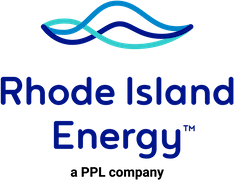Rhode Island Electricity Information
Rhode Island allows residents and businesses to choose a competitive electricity supplier, while Rhode Island Energy continues to deliver power and maintain the grid. If you do not pick a supplier you receive Last Resort Service, which is set on a schedule and typically updates every six months, and the Public Utilities Commission posts supplier lists and explains that not all licensed suppliers are always taking new customers. Many cities now run community electricity aggregation programs that automatically enroll most customers with an opt-out, offering a default supply option that competes with Last Resort Service and often includes higher renewable content. Together these options create a competitive supply market alongside regulated delivery.
Rhode Island generates nearly all its electricity from natural gas, making it one of the most gas-dependent states in the country. While this reliance keeps generation efficient, it also exposes the state to price fluctuations in natural gas markets. Electricity prices in Rhode Island are among the highest in the nation due to its small size, high population density, and dependence on imported energy. To reduce emissions, the state is expanding offshore wind projects and promoting clean energy initiatives, aiming for a more sustainable and resilient power grid. As Rhode Island moves toward a greener energy future, its focus on renewables and conservation efforts will play a key role in managing demand and emissions.
Find Electricity Providers In Rhode Island
Ranks 46th Highest in the U.S.
Average Price: 26.84¢ /kWh
Ranks 46th Cheapest in the U.S.
Average Electric Bill: $140.36
Ranks 29th Cheapest in the U.S.

Electricity Production By Source
Emissions From Electricity Generation
Estimate Your Emissions From Your Electricity Usage
How much CO2, SO2, and NOx do you generate from the electricity that powers your home?
Renewable Electricity Generation
5.75% of Total Production
Energy Usage in Rhode Island
Electricity consumption in Rhode Island is shaped by its coastal New England climate, which brings cold winters and warm, humid summers. Heating demand is significant in the winter, though much of it is met with natural gas or heating oil rather than electricity. In summer, air conditioning increases electricity use, but overall consumption remains relatively low due to the state’s small size and strong energy efficiency programs.
Municipal Utilities in Rhode Island
While most cities, towns, and villages throughout the state of Rhode Island offer municipal essential services like providing clean water, sewage treatment and dealing with waste and storm water, some also offer other services like electricity, natural gas, sanitation or recycling. In Rhode Island, 1 cities offer municipal electricity utility services to their residents.
Largest Electric Companies in Rhode Island
The rest of Rhode Island receives electric utility service from one of many primary providers. Here’s a list of some of the larger providers that might be available to your home:
Rhode Island Natural Gas Information
Rhode Island leans on natural gas more than most states, especially for the grid. In 2023 about 87% of in-state electricity was generated from natural gas, one of the highest shares in the country. At home, roughly 51% of households use gas as their primary heating fuel, while 26% use heating oil and about 15% use electricity, a split that reflects limited pipeline reach outside the southern corridor and the state’s coastal New England climate with cold winters and warm, humid summers. Those seasons drive a clear pattern, winter heat lifts residential demand and summer air-conditioning keeps gas-fired plants running.
Deregulation here is targeted rather than broad. Commercial and industrial customers can choose a competitive gas supplier and have Rhode Island Energy deliver through its pipelines, but residential customers cannot shop for gas supply. The Public Utilities Commission lists certified marketers and explains program details, while Rhode Island Energy’s tariff outlines options for larger users.
Largest Natural Gas Companies in Rhode Island
Many of the residents of Rhode Island receive their natural gas utility service from one of the larger companies that service the state.
Find Natural Gas Providers In Rhode Island
Rhode Island Internet Connectivity
Largest Internet Providers in Rhode Island
When it comes to high-speed internet, homes in Rhode Island have plenty of options to stay connected! From bustling cities to quiet rural areas, a variety of providers offer reliable service across the state. Here are some of the biggest names keeping Rhode Island homes online and in the loop:
Find Internet Providers In Rhode Island
Utility Costs in Rhode Island
The average monthly total utility bills in Rhode Island is $314.4, which is 13.44% higher than the national average.
Find Utility Providers In Rhode Island
Utility Providers by City in Rhode Island
| City Name | Population | Municipal Electricity |
|---|---|---|
| Central Falls | 22,192 | No |
| Cranston | 82,654 | No |
| Cumberland Hill | 8,925 | No |
| East Providence | 47,171 | No |
| Greenville | 8,955 | No |
| Kingston | 6,496 | No |
| Narragansett Pier | 3,265 | No |
| Newport | 25,322 | No |
| Newport East | 11,903 | No |
| Pascoag | 4,471 | Yes |
| Pawtucket | 75,200 | No |
| Providence | 1,270,149 | No |
| Valley Falls | 12,064 | No |
| Warwick | 82,666 | No |
| Woonsocket | 43,044 | No |







